![]()
![]()
![]()
Use LEFT and RIGHT arrow keys to navigate between flashcards;
Use UP and DOWN arrow keys to flip the card;
H to show hint;
A reads text to speech;
16 Cards in this Set
- Front
- Back
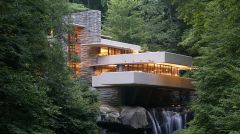
|
Frank Lloyd Wright Falling Water, 1935-37. Beaver's Run, Pennsylvania 1. Philosophical – Marxism, to phenomology to deconstructivism |
|
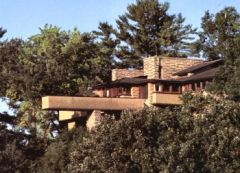
|
Frank Lloyd Wright Taliesin, 1911 - shining brow (house for himself) – built to respect and embrace the history of the land - built into the hill like a brow (as opposed to on top of the hill) so as not to ruin the landscape of the area - the site determined the features of the home, looked like part of the hill under snow - post & beam: continuity, strength, tenuity, flexibility - OPEN PLAN, inside and outside blurring, new floor plan |
|
|
Enligtenment (1650s to the 1780s) |
- Greece comes out from ottoman empire (classicism revival) - new materials: steel, concrete, large sheets of glass - erosion of monarchy, new governments (washington, DC) - Industrial revolution - things that were never public become public (libraries, art) - many scientists become architects - Interest in humans as psychological beings (Edmund Burke) - interest in the sublime |
|
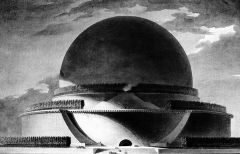
|
Etienne Boulee, c. 1785. Section by ‘night’ -project for a cenotaph for Isaac Newton - the enlightenment is characterizes by a belief in reason, scientific method, revolution, preference for modern over ancient, political liberalism, egalitarianism and humanism. Also, the notion that humans are almost godlike in their ability. - buildings that were never public now become public (libraries, etc.) and no longer just producing churches. - Boule was interested in the primary power that architecture has on our senses, moving away from primarily visual expression - sphere represents the universe - foreshadows much of Le Corb's work |
|
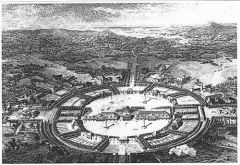
|
Claude-Nicholas Ledoux Ideal city of Chaux, 1804 - salt was important in this region - the city (worker's housing, etc.) is laid out around the director's house, speaking to surveillance power and control - trying to create an ideal community, with new institutions - Ledoux was imprisoned after the french revolution due to his affiliations with upper classes |
|
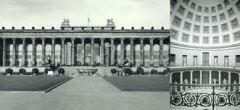
|
Karl Friedrich Schinkel Altes Museum, Berlin, 1828-1830 - Schinkel worked in various styles, and shows an inherent romanticism by evoking a wide range of emotions. Contributed to the transformation of Berlin. - Greek ionic order stretched across the facade which faces the monumental square - in plan it is designed around the rotunda - example of rational planning - links to hyper-efficient design |
|
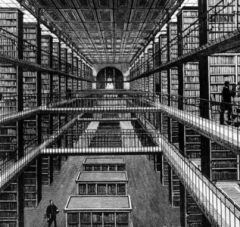
|
Henri Labrouste Paris, Bibliotheque Nationale, 1854-75 - Elaborate reading room - Series of domes - Surrounded by bookcases - Metal columns are detailed similar to the way stone and wood were carved during antiquity - Stacked bays of books with open central core - Bookshelves are laid out to match the structural grid. - This influences library design for over a century - Books are open and exposed for the public, knowledge is accessible |
|
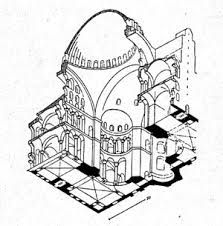
|
Auguste Choisy 1899 - axonometric projection of part of the pantheon, Paris -Choisy was more interested in the constructive systems of Ancient Rome, than in its composition qualities or stylistic details,possibly as result of his engineer sensitivity and the education received at the École Politechnique and École des Ponts et Chaussées. |
|
|
Industrial Revolution |
Industrial Revolution - religious constructs replaced by social and political constructs - new materials: development of iron construction. ny late 18th c. dramatic effects on works of civil engineering - 200 BC wrought iron - cast iron (strong in compression, but hard and brittle) - mid 19th c. steel (stronger form of iron, TENSILE strength, great for suspension bridges and reinforced concrete). - era of the engineer |
|
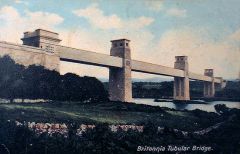
|
Robert Stephenson - Chief Engineer Brittania Tubular Bridge (over menai straits), 1852 - gigantic box gurter bridge - 3 spans, two short spans and one long span to support the huge loads from trains - can discuss how the relationship between architecture and engineering changed in this period. |
|
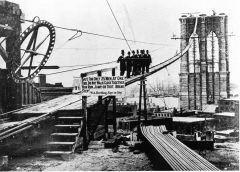
|
J.A and W.A Roebling Brooklyn Bridge, New York, 1877 - can discuss how iron and steel changed this period dramatically. Steel introduced tensile strength that was not possible with iron (as iron is hard and brittle).This meant bridges can be longer spans. - can discuss how the relationship between architecture and engineering changed in this period. |
|

|
Joseph Paxton London, the Crystal Palace, 1851 Joseph Paxton - System of pre-fabrication glass and iron based on the 8 ft module, mass produced in four months, and easily assembled and disassembled. |
|
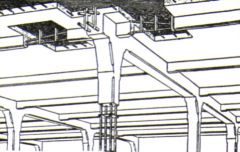
|
Francois Hennebique Monolithic Reinforced Concrete Joint, France, 1892 - INVENTOR OF MODERN REINFORCED CONCRETE - allowed concrete to be structural due to rebar reinforcement - some questions re: corrosion, since concrete takes long time to dry and iron interacts w moisture. - new material technique, plastic and sculptural, flexible, fireproof, strong, allowing for longer spans and less columns. |
|
|
Arts and Crafts Movement |
- Pugin, Ruskin, Morris - Reaction against the low quality, cheaply ornamented and machine produced designs of the industrial revolution. A call for dignity and craft. - Morris: architecture is living, organic thing reflective of current culture, we must achieve a society that “will produce to live, not live to produce,” only then can architecture become part of the life of the people - love of the medieval and simpler, idyllic lifestyles, vernacular archi - socialist under/overtones |
|
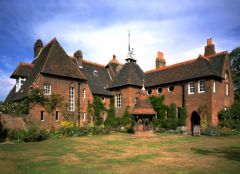
|
Red House, Philip Webb, Kent, 1859 - Designed for and with William Morris – Morris did the furniture |
|

|
Charles Voysey, Broadleys' House, Cumbria, 1898 - Voysey’s finest work - Bold massing and fenestration, clean floor plan, landscaping generous layout |

